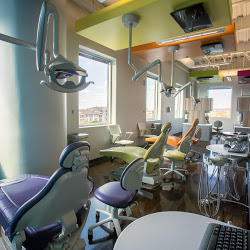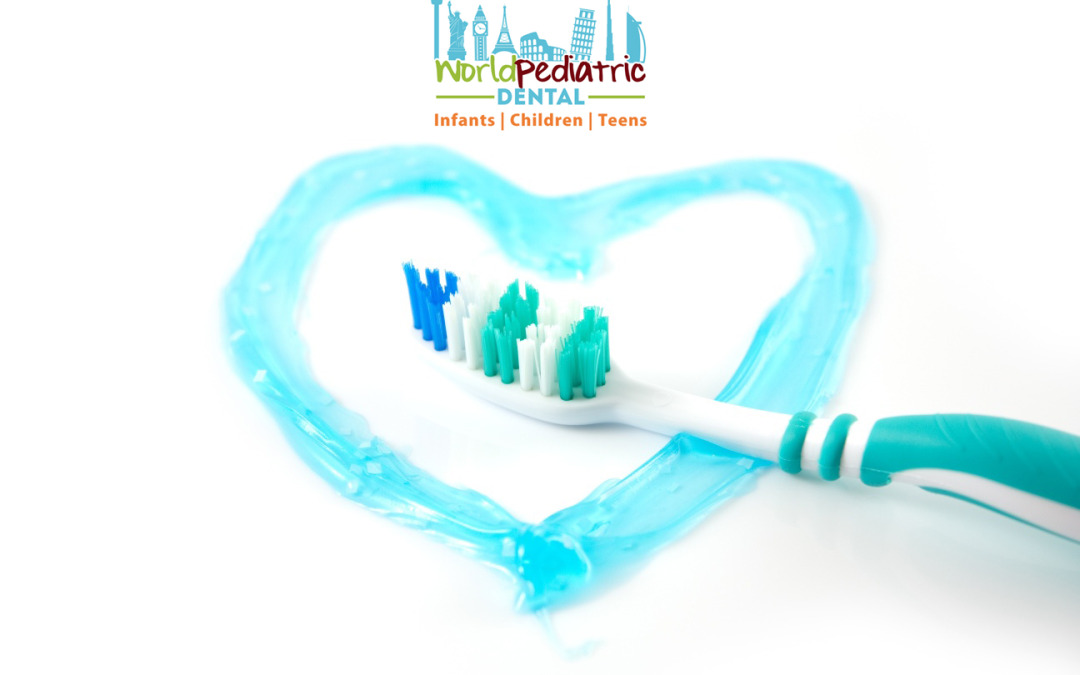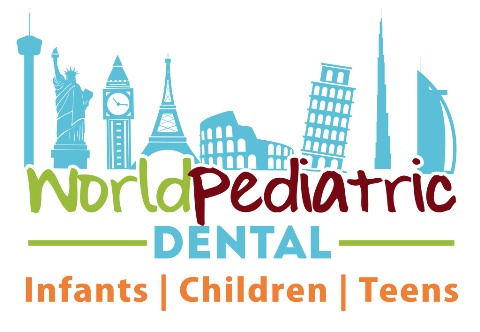 The experience of breastfeeding is very special for many new moms as they consider that time a valuable bonding experience between the mother and newborn child. Moms who are able to breastfeed also benefit for other reasons: they gain overall health benefits, oral health benefits, and cost-savings benefits. This blog will help explain the many benefits, for both mom and child, of breastfeeding. It is important to remember that the American Academy of Pediatrics (AAP) states that “exclusive breastfeeding, defined as giving an infant only breast milk – no water, no formula, or no other liquids or solid foods – is the norm against which all alternative feeding methods should be compared.” The 2012 AAP policy statement on breastfeeding and the use of human milk documents the many important reductions in health risks for infants and children, mothers, families and society that are attributable to breast-feeding. These advantages include developmental, economic, health, nutritional, immunological, psychological, social and environmental benefits. Why Breastfeeding is Important for Overall Health The policy statement of the AAP Section on Breast-feeding states that breast milk is the only source of nutrition a healthy infant requires for about the first six months of life. Breastmilk provides specific nutritional components for the child – providing immunological, anti-inflammatory, digestive and immune system benefits during the most vulnerable time in their lives. There are many reduced health risks for breastfed children including: Acute Otitis Media (Middle Ear Infections) Gastroenteritis and Diarrhea Lower Respiratory Tract Infections – ie. Pneumonia, respiratory syncytial virus (RSV) Necrotizing Enterocolitis Leukemia Sudden Infant Death Syndrome Asthma Obesity Type 2 Diabetes...
The experience of breastfeeding is very special for many new moms as they consider that time a valuable bonding experience between the mother and newborn child. Moms who are able to breastfeed also benefit for other reasons: they gain overall health benefits, oral health benefits, and cost-savings benefits. This blog will help explain the many benefits, for both mom and child, of breastfeeding. It is important to remember that the American Academy of Pediatrics (AAP) states that “exclusive breastfeeding, defined as giving an infant only breast milk – no water, no formula, or no other liquids or solid foods – is the norm against which all alternative feeding methods should be compared.” The 2012 AAP policy statement on breastfeeding and the use of human milk documents the many important reductions in health risks for infants and children, mothers, families and society that are attributable to breast-feeding. These advantages include developmental, economic, health, nutritional, immunological, psychological, social and environmental benefits. Why Breastfeeding is Important for Overall Health The policy statement of the AAP Section on Breast-feeding states that breast milk is the only source of nutrition a healthy infant requires for about the first six months of life. Breastmilk provides specific nutritional components for the child – providing immunological, anti-inflammatory, digestive and immune system benefits during the most vulnerable time in their lives. There are many reduced health risks for breastfed children including: Acute Otitis Media (Middle Ear Infections) Gastroenteritis and Diarrhea Lower Respiratory Tract Infections – ie. Pneumonia, respiratory syncytial virus (RSV) Necrotizing Enterocolitis Leukemia Sudden Infant Death Syndrome Asthma Obesity Type 2 Diabetes...
 Digital advances in Pediatric Dentistry are amazing. Not only do they provide for patient comfort, they create opportunities for Pediatric Dentists to provide better treatment. Digital X-Rays The cutting-edge technology of digital X-rays, also known as digital radiography, enables the Pediatric Dentist to take crisp X-ray images of the teeth, supporting bone and gums and download them instantaneously into the computer without delay, thus eliminating the need for environmentally-harmful film and chemical development. It also allows dentists to magnify and enhance images to review specific dental issues, and instantly transfer them to a patient’s file or dental specialist such as the child’s orthodontist. Digital X-rays are faster and safer than traditional X-rays, reducing the exposure to radiation by up to 90%. Digital Photography The intra-oral camera allows a patient to see what the dentist sees: their mouth from the inside. These photographs can also be enlarged and enhanced to show detail, creating better means of communication and documentation. Since they are not X-rays, there is no radiation involved. The camera is additionally used for “before” and “after” photos, presentations, enhanced diagnosis, insurance claims, and education or monitoring with parents and patients concerning overall dental health. Digital Panoramic X-Rays Panoramic digital X-rays show the health status of all the teeth in one film. Used primarily to show the upper and lower jaw, the TMJ and the sinus areas, to record existing condition and detect abnormalities of the developing teeth, salivary glands, cysts, displaced teeth follicles, etc. They are especially helpful for children who have orthodontic problems, or those who have medical or behavioral special needs...
Active children always seem to be injuring themselves in one way or another. Most of the time, the injury is minor, like a bruise or a scrape. However, sometimes the child needs to see a doctor or a dentist, such as in the case of a broken or loose tooth. Pediatric dentists are especially trained in the management and case of tooth trauma on young teeth. Here is a brief guideline offered by the American Academy of Pediatric Dentistry of the types of trauma children’s teeth can incur, and how you as a parent can help minimize the damage and long term effects. Knocked Out Tooth If a child’s tooth becomes knocked out, the sooner you contact your Pediatric dentist, the better. Quick action can lessen a child’s discomfort, prevent infection, and perhaps save the tooth. Call us even if the injury occurs after regular dental office hours. For baby teeth, rinse the child’s mouth out with water and apply a cold compress to reduce swelling. Do not spend time looking for the tooth, as baby teeth cannot be replanted. For permanent teeth, find the tooth and gentlyrinse it in cold water. DO NOT scrub the tooth or use soap or let it dry out outside the mouth. Handling it only by the crown (don’t touch the root surface), replace the tooth in the socket and have the child hold it there in place with a clean washcloth or gauze as you travel to the dentist. DO NOT place the tooth in water; if you need to carry the tooth, put it into a container with...
Digital advances in Pediatric Dentistry are amazing. Not only do they provide for patient comfort, they create opportunities for Pediatric Dentists to provide better treatment. Digital X-Rays The cutting-edge technology of digital X-rays, also known as digital radiography, enables the Pediatric Dentist to take crisp X-ray images of the teeth, supporting bone and gums and download them instantaneously into the computer without delay, thus eliminating the need for environmentally-harmful film and chemical development. It also allows dentists to magnify and enhance images to review specific dental issues, and instantly transfer them to a patient’s file or dental specialist such as the child’s orthodontist. Digital X-rays are faster and safer than traditional X-rays, reducing the exposure to radiation by up to 90%. Digital Photography The intra-oral camera allows a patient to see what the dentist sees: their mouth from the inside. These photographs can also be enlarged and enhanced to show detail, creating better means of communication and documentation. Since they are not X-rays, there is no radiation involved. The camera is additionally used for “before” and “after” photos, presentations, enhanced diagnosis, insurance claims, and education or monitoring with parents and patients concerning overall dental health. Digital Panoramic X-Rays Panoramic digital X-rays show the health status of all the teeth in one film. Used primarily to show the upper and lower jaw, the TMJ and the sinus areas, to record existing condition and detect abnormalities of the developing teeth, salivary glands, cysts, displaced teeth follicles, etc. They are especially helpful for children who have orthodontic problems, or those who have medical or behavioral special needs...
Active children always seem to be injuring themselves in one way or another. Most of the time, the injury is minor, like a bruise or a scrape. However, sometimes the child needs to see a doctor or a dentist, such as in the case of a broken or loose tooth. Pediatric dentists are especially trained in the management and case of tooth trauma on young teeth. Here is a brief guideline offered by the American Academy of Pediatric Dentistry of the types of trauma children’s teeth can incur, and how you as a parent can help minimize the damage and long term effects. Knocked Out Tooth If a child’s tooth becomes knocked out, the sooner you contact your Pediatric dentist, the better. Quick action can lessen a child’s discomfort, prevent infection, and perhaps save the tooth. Call us even if the injury occurs after regular dental office hours. For baby teeth, rinse the child’s mouth out with water and apply a cold compress to reduce swelling. Do not spend time looking for the tooth, as baby teeth cannot be replanted. For permanent teeth, find the tooth and gentlyrinse it in cold water. DO NOT scrub the tooth or use soap or let it dry out outside the mouth. Handling it only by the crown (don’t touch the root surface), replace the tooth in the socket and have the child hold it there in place with a clean washcloth or gauze as you travel to the dentist. DO NOT place the tooth in water; if you need to carry the tooth, put it into a container with...
 So you’re at the store with your child and looking through the huge variety of toothpaste trying to find one that is just right for your child. Well fear not mom or dad World Pediatric Dental is here to help! What is a good toothpaste for a child? Lets look at a few things. Fluoride First of all, what is fluoride? It is the 13th most abundant element on the earth’s crust. Fluoride is found naturally in the dirt, water and even in some of our foods. What does fluoride actually do? Mainly fluoride protects your teeth from demineralization. When bacteria in your mouth combine with sugar they produce acid and without fluoride on your teeth this acid can erode tooth enamel and damage your child’s teeth. What the fluoride does is act as a a barrier or shield that sits on top of the tooth enamel and stops that acid from getting through to damage the teeth. But what if there is already some damage done to the teeth from this acid? Well fluoride can accumulate in the demineralization areas and begins strengthening the enamel, a process called remineralization. Bottom Line – Fluoride is extremely useful in preventing cavities and making teeth stronger. However, once a cavity has been formed it is much less effective. For children ages 1-3 we recommend using just a smear of fluoride toothpaste on a soft bristle toothbrush. For ages 3 and up use a small pea sized amount on a soft bristle toothbrush. Both examples are illustrated below. Look for the ADA Seal OK, so we know so far when...
Valentine’s Day is around the corner, and just like any other holiday, it is a time when sugary sweets and candies flow generously. Whether it’s your child’s classmates at school passing out sweet Valentines or his favorite auntie giving him a giant chocolate heart to show her love, your child will be surrounded with more sweets than you can control. While chocolate covered strawberries, gummy bears and candy hearts are quite tasty, they aren’t the best choices for his oral health. We understand that you are probably not going to have him skip out on this sugary holiday, so we would like to share with you some information on the sugary treats he may receive this Valentine’s Day. As a pediatric dentist we understand how much kids love candy! A few of the most common treats your children may receive this holiday include: chocolate, chocolate covered fruit, hard candy, and sticky candy. It is important to remember that while all of these sugary treats are delicious, they can do some damage to his overall oral health if not eaten in moderation. Hard and sticky candies are known for coating teeth with sugar and have the tendency to be hard to remove. Also, even though you might think it the best idea and solution after allowing your child to enjoy more sweets today, it very important to know not to brush his teeth immediately after eating candy. By doing so, you can brush away the enamel on the teeth. Instead, rinse his mouth out with water to get the sugary residue off the teeth. Your pediatric dentist recommends brushing after...
The lifelong journey of dental prevention and oral health begins from the moment your baby is born. When your little one is less than a year old and you can easily count the number of teeth he has, it’s critical to set the stage for a healthy smile. From soothing teething gums to maintaining baby’s hygiene and even planning for his first visit to see the baby dentist, new parents have a lot to think about. Here are 10 tips to ensure top marks in oral health from year one on: Wipe the inside of baby’s mouth every day, gently massaging the gums with a damp washcloth. Avoid a pattern of putting baby to bed with a bottle or allowing baby to bottle feed at will, as this creates slow and constant exposure to the sugars in milk or formula. Encourage baby to drink from a sippy cup at six months old. Fruit juices should only be served in cups, not bottles, and limited to mealtime once a day. Try to avoid sharing utensils with your baby. Bacteria from your saliva, called streptococcus mutans, are transmittable from your mouth to theirs and may increase the risk for lifelong decay. Keep pacifiers clean with water only. Your baby’s first tooth will erupt when she is around six months of age. Remember to schedule her first visit to see our baby dentist within six months of this important milestone! Soothe teething babies with a chilled teething ring or cold, wet washcloth against the gums. Switch from the washcloth to using a soft-bristled brush and cold water to clean baby’s new...
So you’re at the store with your child and looking through the huge variety of toothpaste trying to find one that is just right for your child. Well fear not mom or dad World Pediatric Dental is here to help! What is a good toothpaste for a child? Lets look at a few things. Fluoride First of all, what is fluoride? It is the 13th most abundant element on the earth’s crust. Fluoride is found naturally in the dirt, water and even in some of our foods. What does fluoride actually do? Mainly fluoride protects your teeth from demineralization. When bacteria in your mouth combine with sugar they produce acid and without fluoride on your teeth this acid can erode tooth enamel and damage your child’s teeth. What the fluoride does is act as a a barrier or shield that sits on top of the tooth enamel and stops that acid from getting through to damage the teeth. But what if there is already some damage done to the teeth from this acid? Well fluoride can accumulate in the demineralization areas and begins strengthening the enamel, a process called remineralization. Bottom Line – Fluoride is extremely useful in preventing cavities and making teeth stronger. However, once a cavity has been formed it is much less effective. For children ages 1-3 we recommend using just a smear of fluoride toothpaste on a soft bristle toothbrush. For ages 3 and up use a small pea sized amount on a soft bristle toothbrush. Both examples are illustrated below. Look for the ADA Seal OK, so we know so far when...
Valentine’s Day is around the corner, and just like any other holiday, it is a time when sugary sweets and candies flow generously. Whether it’s your child’s classmates at school passing out sweet Valentines or his favorite auntie giving him a giant chocolate heart to show her love, your child will be surrounded with more sweets than you can control. While chocolate covered strawberries, gummy bears and candy hearts are quite tasty, they aren’t the best choices for his oral health. We understand that you are probably not going to have him skip out on this sugary holiday, so we would like to share with you some information on the sugary treats he may receive this Valentine’s Day. As a pediatric dentist we understand how much kids love candy! A few of the most common treats your children may receive this holiday include: chocolate, chocolate covered fruit, hard candy, and sticky candy. It is important to remember that while all of these sugary treats are delicious, they can do some damage to his overall oral health if not eaten in moderation. Hard and sticky candies are known for coating teeth with sugar and have the tendency to be hard to remove. Also, even though you might think it the best idea and solution after allowing your child to enjoy more sweets today, it very important to know not to brush his teeth immediately after eating candy. By doing so, you can brush away the enamel on the teeth. Instead, rinse his mouth out with water to get the sugary residue off the teeth. Your pediatric dentist recommends brushing after...
The lifelong journey of dental prevention and oral health begins from the moment your baby is born. When your little one is less than a year old and you can easily count the number of teeth he has, it’s critical to set the stage for a healthy smile. From soothing teething gums to maintaining baby’s hygiene and even planning for his first visit to see the baby dentist, new parents have a lot to think about. Here are 10 tips to ensure top marks in oral health from year one on: Wipe the inside of baby’s mouth every day, gently massaging the gums with a damp washcloth. Avoid a pattern of putting baby to bed with a bottle or allowing baby to bottle feed at will, as this creates slow and constant exposure to the sugars in milk or formula. Encourage baby to drink from a sippy cup at six months old. Fruit juices should only be served in cups, not bottles, and limited to mealtime once a day. Try to avoid sharing utensils with your baby. Bacteria from your saliva, called streptococcus mutans, are transmittable from your mouth to theirs and may increase the risk for lifelong decay. Keep pacifiers clean with water only. Your baby’s first tooth will erupt when she is around six months of age. Remember to schedule her first visit to see our baby dentist within six months of this important milestone! Soothe teething babies with a chilled teething ring or cold, wet washcloth against the gums. Switch from the washcloth to using a soft-bristled brush and cold water to clean baby’s new...
Translate »





